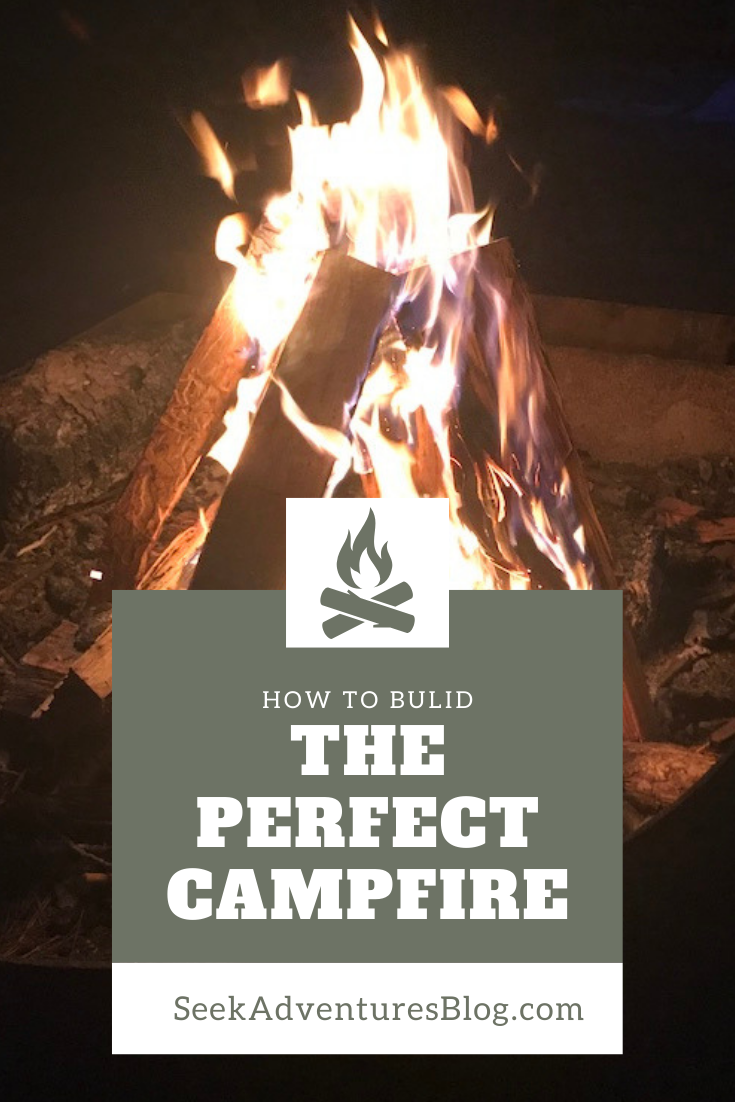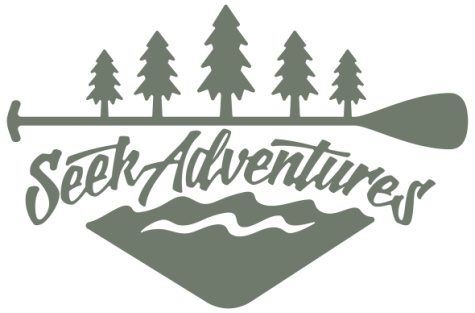Campfires are a quintessential part of camping. Who doesn’t love sitting around a campfire and singing songs, telling stories, roasting marshmallows, or even just watching the flames dance and flicker? But, building a campfire can be tricky, especially for people new to the outdoor lifestyle. Over the years, I have developed a combination method to build a campfire that is almost foolproof. The best part is you don’t need fancy fire starters or chemicals to get it going. Keep reading for some tips on how to build the perfect campfire.
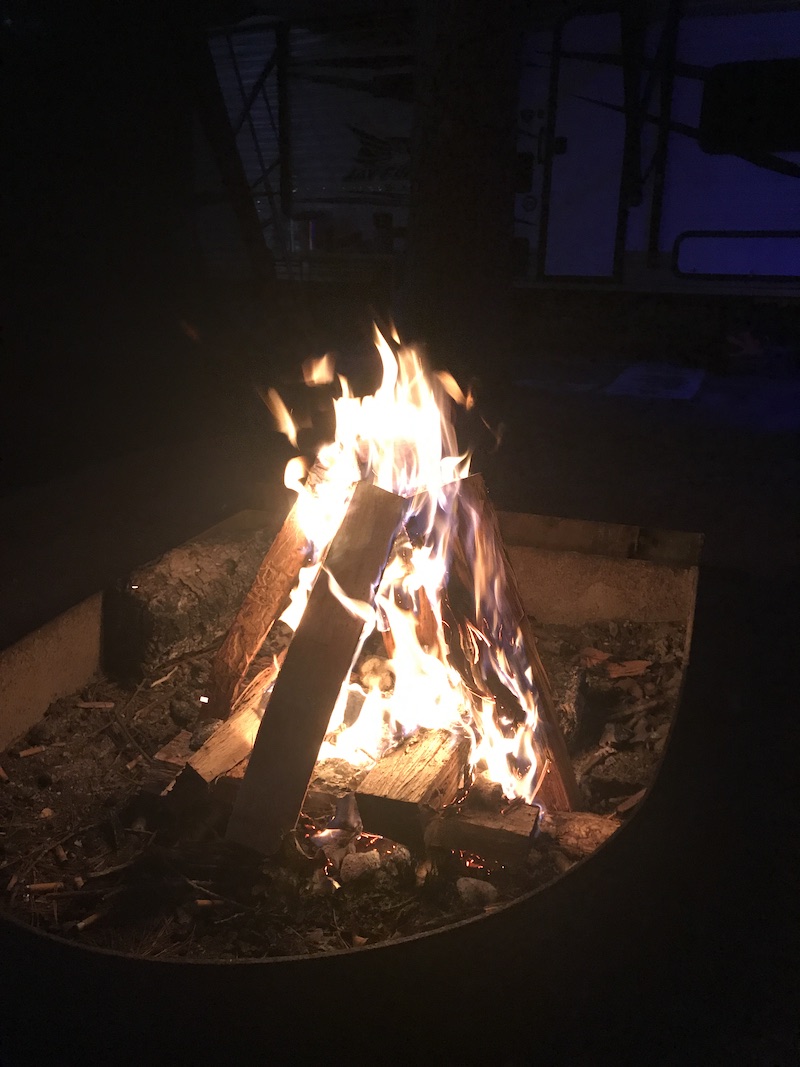
Supplies Needed to Build a Campfire
Some campfire tutorials will try to convince you that you need three different sizes of wood, lighter fluid, or even fancy fire starters to be successful. That’s not true. You really only need three things to build the perfect campfire:
- Dry Wood (8-10 pieces)
- Kindling
- Lighter or Matches
That’s it! Nothing fancy needed. See? I told you this would be easy. Now let’s break down each of the ingredients.
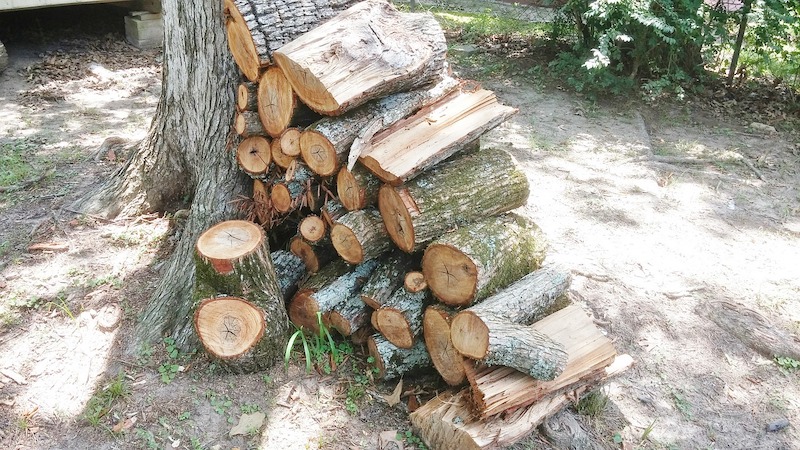
Dry Wood
Dry wood is essential to building the perfect campfire. If your wood is damp or worse, wet, you will have a difficult time getting a fire started no matter what you do. If you have no choice and must use damp wood, you will want to increase your kidling.
First of all, always make sure you follow firewood laws where you are camping. Bringing your own wood is illegal in some places. Some places may require you to purchase wood in the park or at least in the county where the park is located. This isn’t a money-making scheme. There are some legitimate environmental concerns with moving firewood. You can read more in this article I wrote for a local publication: Don’t Move Firewood. Many places will allow you to collect already fallen logs, or you can purchase from a local seller. We typically buy our firewood from a local service station.
The key with firewood is to make sure the wood is really dry. If your wood comes wrapped in plastic, make sure there is no condensation built up inside the plastic. If you need to store your firewood for several days at your campsite, cover it loosely with a tarp if there is any risk of rain.
You also want to select 8-10 similar sized logs to start your fire. If you have bigger or smaller pieces, you can add those later.
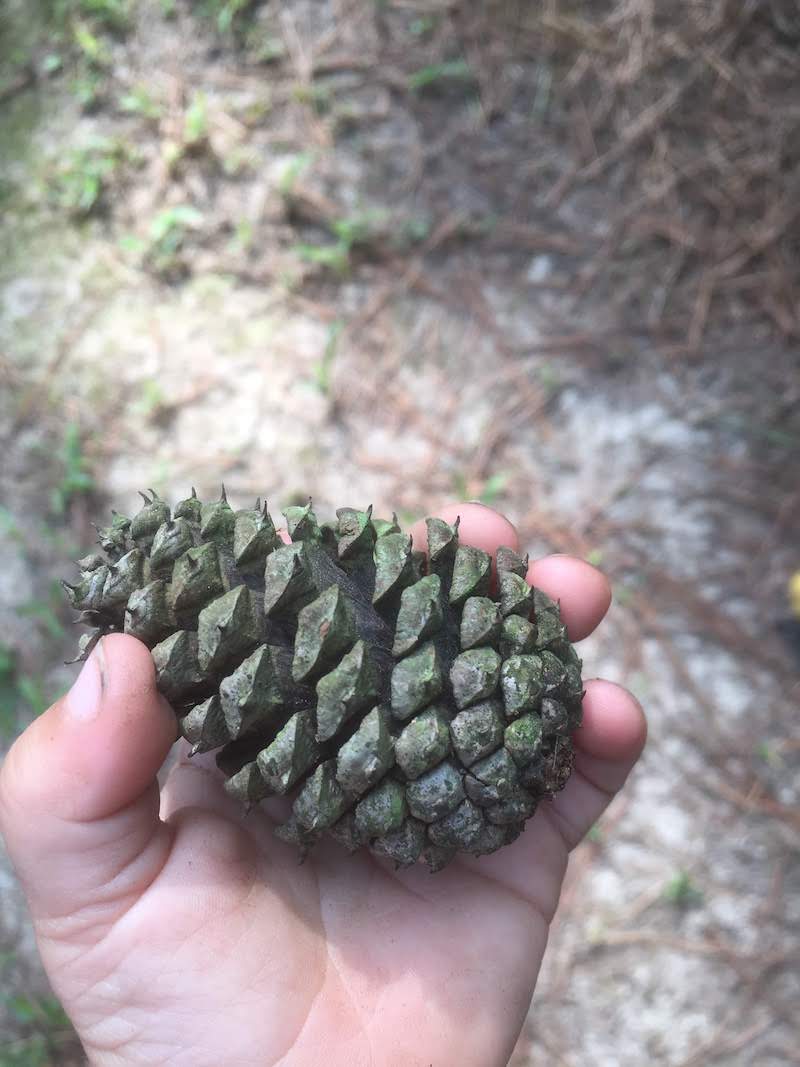
Kindling
Kindling is a small, dry material that lights easily and will help to ignite the larger firewood. We have a small bucket that we use to collect kindling around our campsite. When we arrive, this is my son’s task while we set up camp. Dry leaves, dry pine needles and dry pine cones are my favorite. Small sticks and bits of bark also work well.
Newspaper is also a popular type of kindling, but it’s not a requirement. We get a weekly grocery circular mailed to us that I usually collect and save in a cabinet in our camper. The circular is made of newspaper, doesn’t have a plastic coating, and is perfect if kindling is sparse or we have slightly damp wood.
Lighter or Matches
I’ve lit fires with matches, flint and steel, a magnesium block, a bow drill and a lighter. Using a lighter is by far the easiest. We usually keep several stick lighters on hand in our camper.

How to Build the Perfect Campfire
Now that we’ve collected all of our supplies, it’s time to build the perfect campfire.
There are lots of methods for stacking wood, but the trick is
- Getting enough oxygen to keep a fire going
- Having contact between the kindling and the wood so the wood ignites
One mistake I see other campers make over and over is packing their fire pit to0 full. They add so much kindling and wood that the fire is destined to fail before it even starts. Little to no oxygen can get in, and they wonder why the kindling begins to burn and then quickly goes out. Well, it was starved of oxygen!
The second mistake I often see is when campers stack so there is no contact between the kindling and the wood. They have a beautiful pile of kindling topped with a lovely pile of wood, but the fire won’t start because they have too much space.
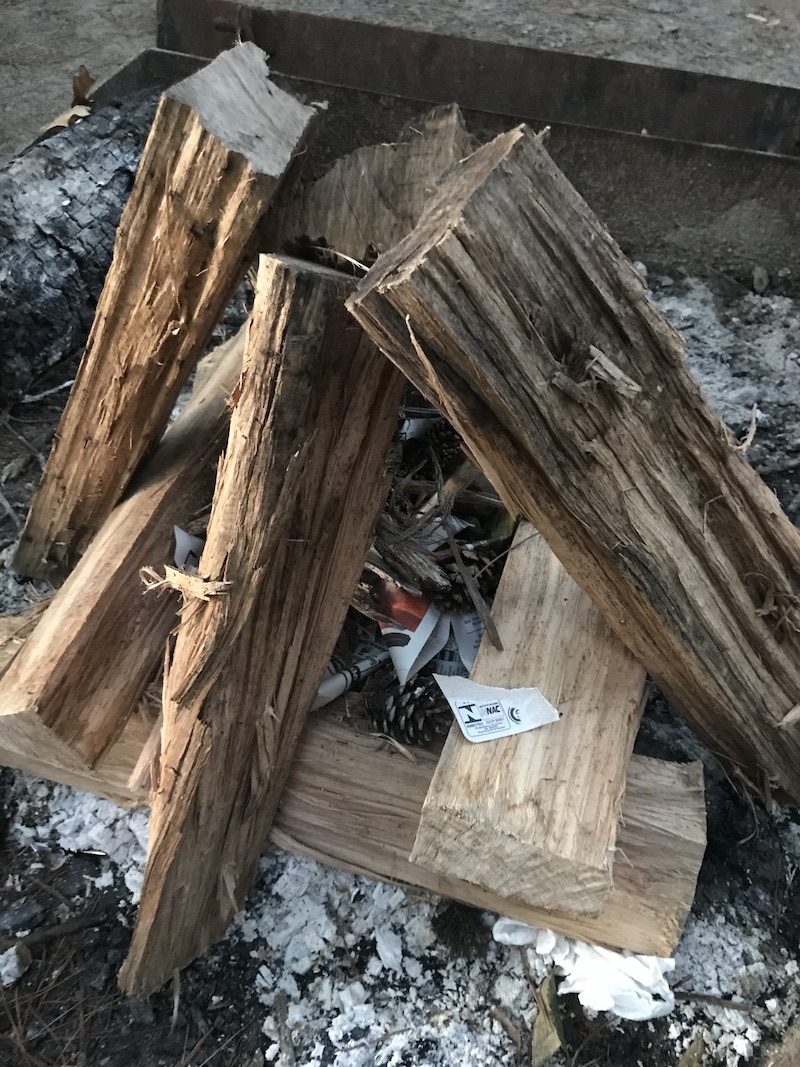
You may have heard of the teepee method or of the log cabin method for stacking wood. I like to use a combination method.
- Lay 4 logs in a square, log cabin style.
- Fill the center with kindling. Do not pack it in. The kindling should be loose and should mound up slightly higher than your base.
- Use 4-6 additional logs to create a teepee over the log cabin and kindling.
- Light your kindling. (Hint: Make sure the flames from your kindling are actually reaching your wood. If they aren’t, add more kindling!)
- Add additional kindling if needed.
- Enjoy sitting around your perfect campfire!
What To Do When You’re Done With Your Campfire
Never leave a campfire unattended and make sure you always extinguish the flame before you retire for the evening. We usually use the same bucket we use to collect kindling to douse the fire with water. If you aren’t very close to a water source you can also use sand and a small camp shovel to put out the flame.
You May Also Enjoy
Campfire S’mores Cones – The Perfect Camping Dessert for Tiny Hands
The Beginner’s Guide to Buying Camping Gear
